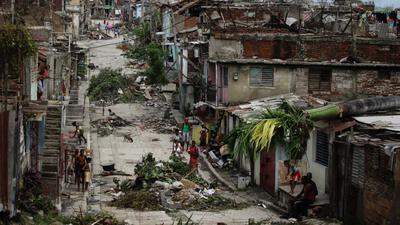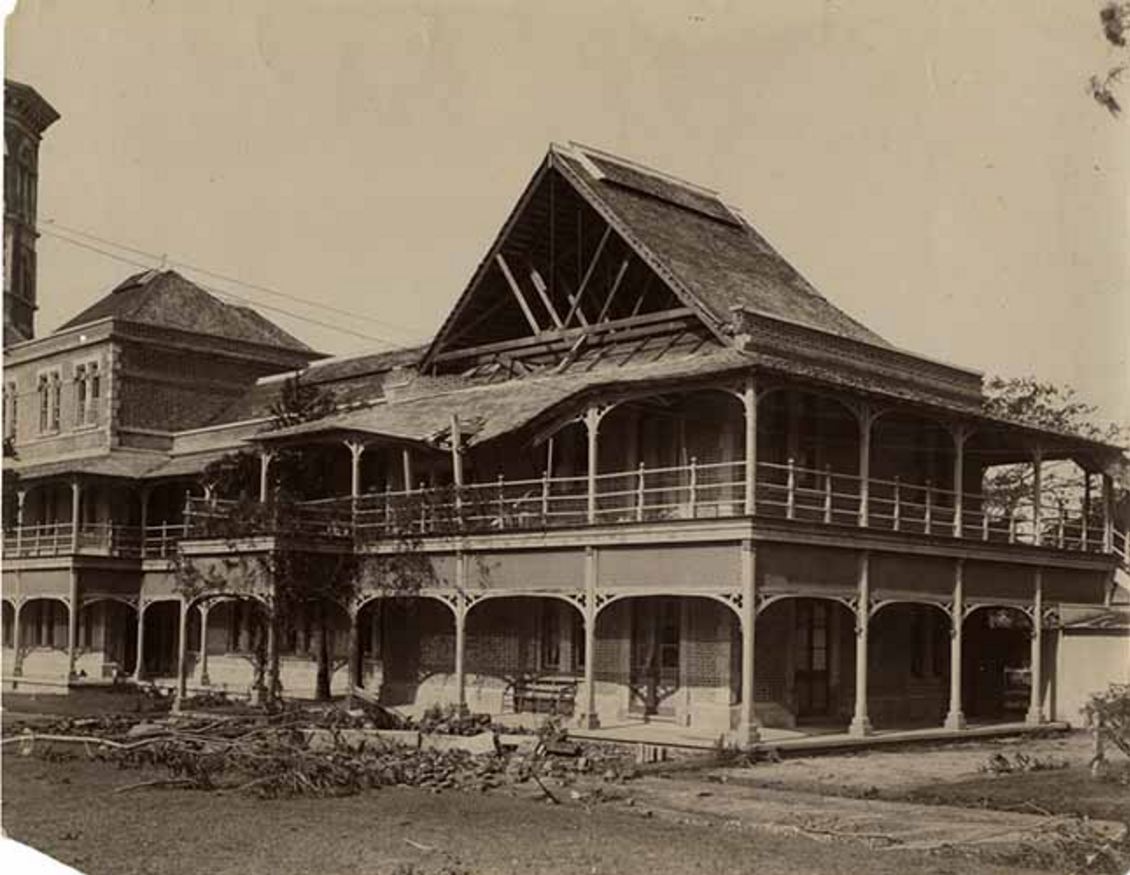It is June, which means we are officially in the Atlantic hurricane season where islands of the Caribbean and other parts of the Americas brace for major storms.
I remember a common saying heard during my childhood, often spoken by an adult to an adolescent. “You a young bud, you nuh know hurricane.” It was usually a retort to beliefs or steps or actions taken by a youngster who is unaware or unmindful of the risks or the dangers involved.
Literally speaking, this held true, for Jamaica went for 37 years without a direct hit from a major storm – Hurricane Charlie in 1951 and Hurricane Gilbert in 1988. The operative term is “direct hit from a major storm,” for the island did suffer from the effects of various cyclones in the interim, such as Hurricane Hazel in 1954 that caused 32 deaths from rain and flooding.

As “young buds,” we really did not know hurricanes. I recall my father being annoyed with a nephew of his who, at the prospect of Hurricane David landing on Jamaica in 1978, declared his desire to “know what a hurricane is like.” David sliced by Jamaica without hitting it directly, though there was much rain and a few uprooted trees, including a large “cuscus” breadfruit tree in our yard. My father used the exact words to his nephew (my cousin), hinting at the danger a hurricane poses, “You a young bud, you nuh know hurricane.” Hurricane Allen gave us a better taste of a major storm in 1980, slicing to Jamaica’s north at 130 mph without landing directly on the island, causing much damage from flooding, wind and landslides.
I already had the sense of danger of what hurricanes were like, for my father regaled us with his experiences during the 1944 hurricane and Charlie in 1951. And even though Charlie was the hurricane most talked and written about, he insisted the 1944 storm was the worst of the two. Years later, I learned that the 1944 storm mostly affected the northern portion of the island, where we lived in St. Ann, while Charlie caused more widespread damage throughout the island. Both were of similar strength. 1944 had wind speeds of 120 miles per hour while Charlie attained 125, but Charlie killed 154 and left some 50,000 homeless.
I lived through two hurricanes prior to leaving the country, Gilbert in 1988 and Hurricane Ivan in 2004. Since then, Hurricanes Dean in 2007 and Hurricane Sandy in 2012 have landed on the island’s shores.
Great hurricanes of past centuries
Jamaica has long been susceptible to, and suffered much from a good many hurricanes. There were hurricanes almost back to back in 1571, 1574, 1577, 1578 and 1579 and another in 1597. The latter part of the 17th century saw storms in 1683, 1686, 1689, 1690 and 1692. Some 12 hurricanes landed on the island between 1712 and 1804, including the “great hurricanes” of 1712, 1722 and 1780. There were hurricanes in 1812, 1813 (two in August of that year), 1815 and 1818, with others also in 1874, 1880 and 1886.
The early 20th saw quite a few, 1903, 1912, 1915 and 1916.

Of the 1597 storm, Francis J. Osborne, writing in the History of the Catholic Church in Jamaica, said:
The first sign of impending disaster came during the previous day when an ominous stillness filled the atmosphere and not a leaf stirred on the trees. The morning sun was reported to have changed to an awesome orange hue in the late afternoon, while several hours previously storm winds began to stir, mounting in intensity as time progressed until black clouds darkened the heavens with heavy rains driven by the fury of the storm. Gusting up to one hundred miles an hour, the hurricane swept through the streets of Santiago de la Vega (Spanish Town), driving the rain with such force that it entered every crevice, lifted roofs from their supports, and hurled them miles away, while walls collapsed like paper.
Jamaica in 1896: Handbook of Information, published by the Institute of Jamaica, mentioned a hurricane in 1711 rather than 1712, in opposition to other sources. It said the “severe storm in the western part of the island, the parish of Westmoreland alone sustaining damage to the extent of £700,000.” That is, Westmoreland was devastated to the tune of more than £140 million or more than US$204 million in today’s currency.
Among the major landmarks affected by the 1712 hurricane was “the old Cathedral… called the Church of St. Catherine’s, and is the Cathedral of the Diocese of Jamaica.” The cathedral, which is still a major landmark in Spanish Town in St. Catherine, was restored in 1714 and its tower added in 1817.
According to the Handbook of Jamaica, the August 22, 1722, hurricane did extensive damage to Port Royal. It “swept the greater portion of the buildings into the sea and destroyed a number of lives.” Of the 50 vessels that were docked in the harbor, only “four men-of-war and two merchant ships alone rode out the storm,” and even these lost their masts and sails.
The hurricane in 1744 “can never be remembered without horror” for the damage it caused in Savanah-la-mar in Westmoreland and elsewhere. “The sea bursting its ancient limits overwhelmed that unhappy town and swept it to instant destruction, leaving not a vestige of man, beast or habitation behind. So sudden and comprehensive was the stroke,” one Bryan Edwards reported. “I think the catastrophe of Savanna la Mar was even more terrible, in many respects, than that of Port Royal.”
Pullen-Burry in his 1905 book, Ethiopia in Exile: Jamaica Revisited, reported that “Admiral Collingwood, the friend and companion of Nelson, was in 1781 wrecked in the good ship Pelican, off Morant Cays, in a hurricane.” The Morant Cays, part of Jamaican territory, lie to the east.
Jamaica in 1896 claimed that in 1784, 1785 and 1786, “the island was visited by very severe storms, and a large number of Negroes perished from famine.”
As a child, we had a rhyme that went: “June too soon, July standby, August you must, September remember, October all over.” This supposedly summed up the regular hurricane season, but this was not always so. The 1670, 1726, 1744, 1780, 1786, 1812, 1815 and 1844 hurricanes all occurred in October. Those in 1818, 1874 and 1912 occurred in November.
We were told “the island was afflicted with a hurricane (November, 1874) by which many of the provision grounds of the peasantry were destroyed.”
Port Royal seemed to have been especially affected by natural disasters. Jamaican history speaks much of the 1692 earthquake that destroyed the city. But hurricanes seemed to have played a part in its demise as well, including those that occurred in 1680, 1683 and 1686. We spoke earlier of the devastation caused to Port Royal in 1722 and that town and Savana-la-mar in 1744. Other hurricanes pounded the once “wickedest city in the world,” including one in 1880. “Port Royal suffered severely in the hurricane of the 18th August 1880, and very many of the houses, then wholly or partially destroyed, remain in a condition of dilapidation,” the 1900 edition of the Handbook of Jamaica recorded. The monster hurricane of 1903 did not help.
The devastating hurricane in 1903 seemed to have rivaled the destruction caused by Hurricanes Charlie and Gilbert. It packed winds of 120 mph and affected much of the colony. “On 11th August the Island was visited by one of the most disastrous hurricanes that have smitten Jamaica for many years,” the Handbook of Jamaica recorded.
Wide-spread destruction was caused to growing crops and buildings. The devastation was wholesale in the banana-growing parishes of St. Mary, Portland, St. Thomas and the plains of St. Catherine, and the money value of the crops, including the coconut groves of St. Mary and Portland was estimated at several millions sterling. The pimento crop was also swept away, and it is estimated that fully one half of the pimento trees was uprooted or blown down. It is believed that over 65 deaths were more or less caused directly by the storm.
The August 13, 1903, issue of the Daily Telegraph in England reported the loss at £2 million, which is £220 million in today’s currency or more than US$316 million.
Alfred Leader, in his book, Through Jamaica with a Kodak, published in 1907, reported that:
On these journeys you frequently see evidences of the effects of the great hurricane of 1903, the many broken cocoanut (sic) palms, which one finds in places along the coast, showing the path of the gale. A member of one of the churches built on high ground, in describing the terrible experiences of that time, said that the people flocked to the church (built by themselves) for protection, thinking their last hour had come. Their church, although in so exposed a position, weathered the gale admirably.
A special law was passed to assist those who were severely affected. “Law 47 — The Hurricane Loans Law, 1903, providing for the issue of Government Loans to persons whose cultivation has been destroyed by the hurricane of the 11th August, 1903.” The law led to the appointment of a special “Hurricane Loan Officer” to handle claims and assistance.
For hundreds of years, Jamaica and Jamaicans have bounced back hurricane after hurricane. As things are, with climate change, global warming and all, the island will likely face more storms to come.